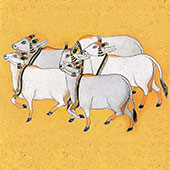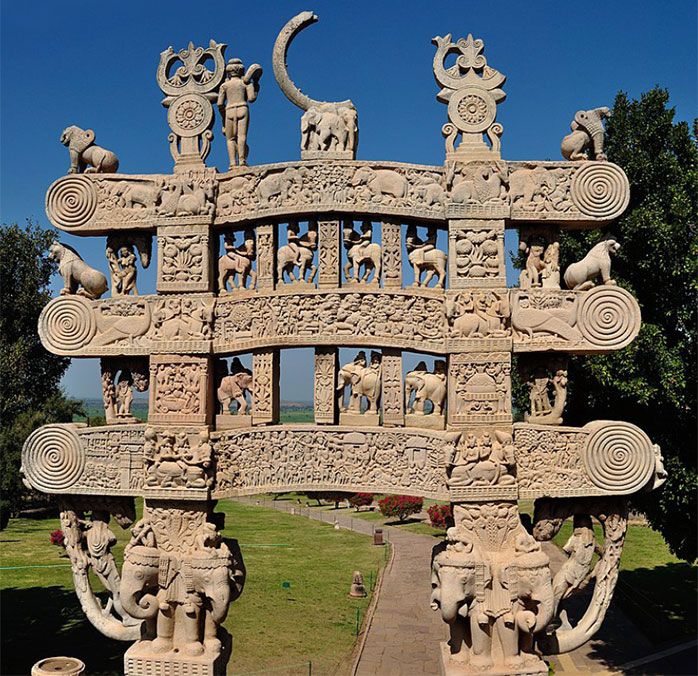The depiction of cattle in Indian art has evolved through the centuries, with different periods and styles emphasizing varying aspects of their importance. Here are some general comparisons between the depiction of cattle in the Indus Valley, Mauryan, Gupta, Mughal, and colonial eras:
• Indus Valley Civilization:
The Indus Valley Civilization, which existed from around 2600 BCE to 1900 BCE, did not leave behind written records, but their art and artefacts provide clues about their way of life. Cattle are depicted in many Indus Valley seals, often in a naturalistic style. They were likely kept for their milk, meat, and labor. Hence, it is unclear whether these depictions had any symbolic or cultural significance.
• Mauryan Empire:
The Mauryan Empire (322-185 BCE) was a time of political and social change in India, and this was reflected in the art of the time. Cattle were depicted on the famous Pillars of Ashoka, which were erected throughout the empire. These pillars feature bull capitals, which were sculpted in the round and symbolized power and authority.
• Gupta:
The Gupta period, which spanned from around 320 CE to 550 CE, saw cattle depicted in a more decorative and stylized manner. They were often shown as part of religious or mythological scenes, such as Krishna playing the flute for a herd of cows.
• Mughal:
During the Mughal period (1526-1857), cattle were depicted in a more realistic manner, often as part of courtly scenes or in hunting scenes. Some of the most famous Mughal paintings featuring cattle were created by artists such as Ustad Mansur and Abul Hasan.
• Colonial:
In the colonial period, which lasted from the 16th century until India’s independence in 1947, cattle were often depicted in a more romanticized and nostalgic manner. They were shown as symbols of India’s rural past and traditional way of life, rather than as working animals. attle are depicted in many colonial paintings, often in a realistic style, reflecting the changing economic and social landscape of India.
Overall, the depiction of cattle in Indian art has varied widely depending on the time period and artistic style. While some eras emphasized the utilitarian role of cattle, others portrayed them as symbols of religious or cultural significance, or simply as part of everyday life.


